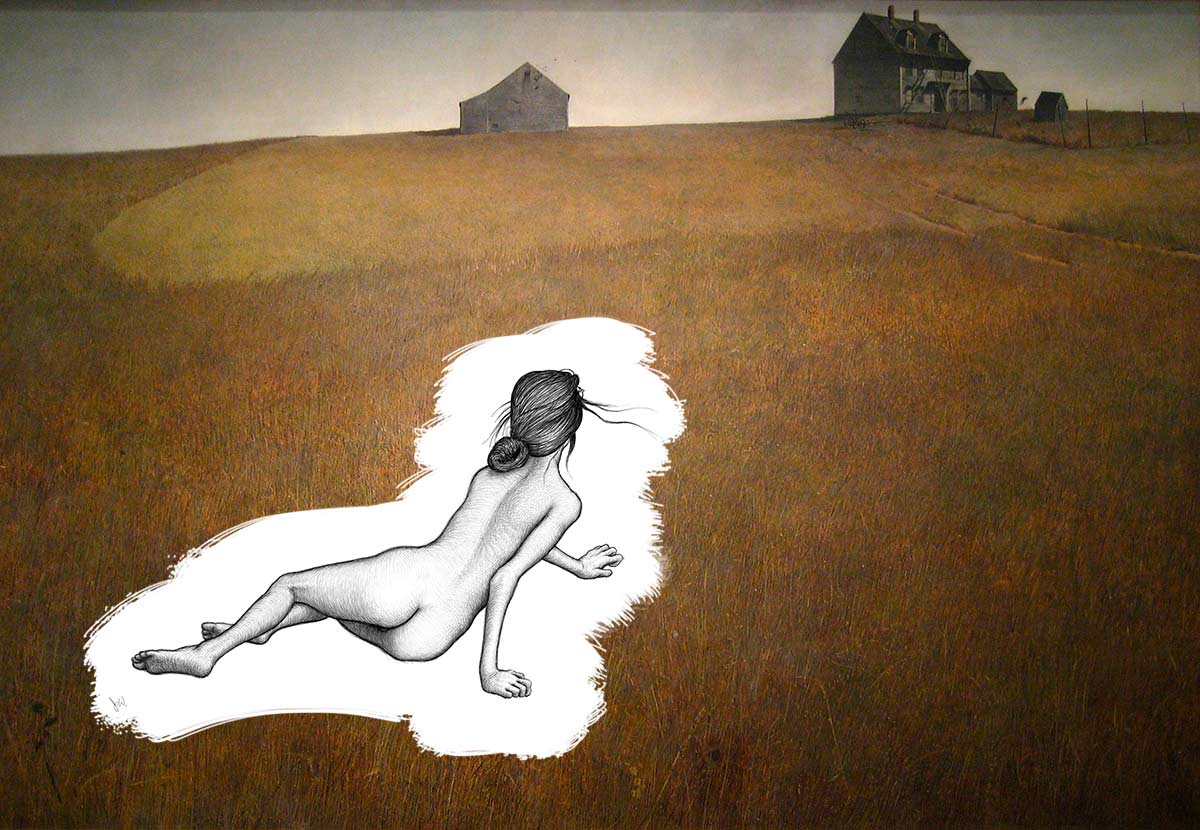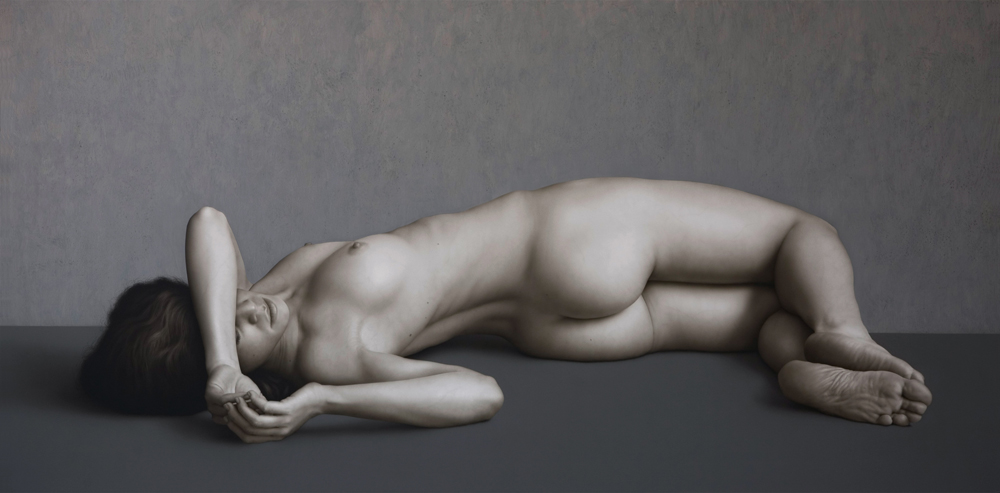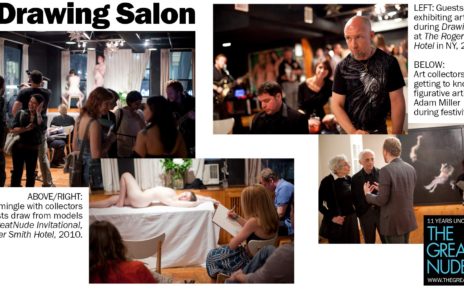When asked to describe an artistic genius, most people think of the Spanish artist Pablo Picasso. Picasso exhibited his undeniable creative talents at an early age and left a large body of excellent work produced throughout his prodigious lifetime. His whole career appears to have been the result of a successful strategy of exploration and risk-taking at just the right moment in history. Genius.
We are all familiar with the story of an artist emboldened by ambition and natural talent, who changed the definition of art. Most people associate Picasso with his groundbreaking abstractions of reality, and commandeering other cultures throughout the artistic journey. I’d like to focus on Picasso as a “Figurative” artist who used the nude figure to communicate the essence of Life and variety of human characteristics that fascinated him.
Picasso began his journey as an artist from a traditional, academic starting point, and at a very young age. Picasso’s father was a professional artist, and when his young son’s talent was recognized, the talented boy was trained and pushed into the world of art production, making his progression as an artist, who could work maturely with the nude figure all the more assured.
BLUE PERIOD
In the early 1900’s, after the death of his sister and the suicide of a close friend, Picasso entered into the first major phase of his career, known as the Blue Period. The paintings produced during this time were filled with the emotions of loss and sorrow. Picasso’s use of the nude figure in these works projected a humility that feels sincerely personal.
Picasso was projecting an intimate vision of the human condition through the figure in these works, perhaps his first serious artistic statement. With his own emotional experience as his guide, he began to explore the boundaries of what the figure can communicate outside of the rigid technical traditions that guided most European artists.
A completely technical rendering of a the human form could not express Picasso’s personal vision though. He sought to express a more tangible and realistic emotion in his work. The Blue Period was the first step into unfamiliar territory.
ROSE PERIOD
The passing of time can heal and provide perspective. Picasso’s Rose Period is the next leg of Picasso’s journey. Known for its brighter tones, filled with imagery of brotherhood, companionship, and the emotional sense of renewal, this also signaled a new direction in Picasso’s use of the Figure.
Picasso often referenced Classical forms and motifs during this period and his compositions often reflected an idyllic, Mediterranean life from some past time. A place of emotional stability, or perhaps a romantic dream for most Europeans in the years before World War I.
Picasso’s nudes became more simple. The lines of his torsos and limbs became graceful and light, more gestural than definitive. All anatomy surrenders to poetry as the outlines of the human form speak to the human energy within the figure. The figures appear calm, whole, and healed but still very much vulnerable.
CLASSICISM
In formalizing his Classical style, Picasso shifted his concentration to the volumetric qualities of the figure. His nudes began to have the heft and weight of the columns standing in Athens, built 2000 years earlier. As it was taught to young artists that the perfection of Western Civilization can be found in the art of the Greeks, Picasso reminds us that this is a romantic notion, if not a futile attempt at solace in historically darkening times.
While the figure may not be presented as the container of the soul, the body is here on display. The body however is not smooth and beautiful, capable of motion and grace, but blocky and tubular, and rooted into the earth, much like the ancient Greek architecture of the past. Its surface rough like the walls of a Mediterranean house exposed to the weather.
The human form in Picasso’s classic works was used to project themes of motherhood, family, love, and often within scenes of domestic tranquility and on sunny Mediterranean beaches. His figures appear calm and detached, their eyes darkened with a blissful calm. Not surprisingly, these works were produced during the years in which Picasso was himself building his own family.
While the artist often returned to this style during the years prior to World War II, as the times darkened, he seemingly abandons this for continued explorations within Cubism and Surrealism.
PRIMITIVISM
Picasso’s success as a young artist, and his voracious quest for fresh inspiration during these early years, led him to other cultures and continents. Whatever the cause or effect he intended, Picasso’s nudes during this period were subjected to numerous mutations and abstractions.
While many see Picasso’s use of African imagery as a device employed to surprise and shock European tastes. It may have also provided Picasso with new ways to channel the deeper feelings he sought to convey through his work.
Picasso found in primal African statuary and masks, the powerful expressions of base human instinct and animal energy he was looking for. Much of this figurative work has the energy of dance and motion.
CUBISM
One of Picasso’s signature styles was known as Cubism, which challenged the art establishment’s concept of the figure. Picasso’s continued drive to use the figure to describe abstract ideas, and to challenge the viewer to see beyond known concepts of art-making and even Art History itself, was difficult for many of his contemporaries to accept.
Picasso’s treatment of the nude form is still remarkable even after a century. While one can certainly recognize the abstractions of the human forms in many of his works from this period, it must be noted that treating the sacred figure in this brutal fashion was a shockingly new concept in art and unpleasing to many critics.
Picasso’s pioneering exploration of abstracting the figure divided artists into two schools of thought. There are artists who feel that conquering the figure requires years of study (in order to master the techniques of natural realism). Many in the world of modern art would disagree, placing emphasis on creativity, rather than technical ability.
Picasso’s intentional disregard for old-world techniques, and his relentless pursuit of new means of expression through the figure, is reflective of an artist whose natural abilities allowed him to go where others could only aspire.
In the second half of the 20th century, Picasso’s figurative works were less groundbreaking, and appeared more focused on the life of a successful artist. The road that he pioneered was now well-worn by other artists who moved deeper into abstraction, commandeered by an art market that was maturing and seeking fresh talent.
Picasso had the good fortune of being an artist at a time when so much of the intellectual and cultural underpinnings of European society had been decimated by warfare and wrenching upheaval. Picasso was searching for, and speaking to, the human condition amidst the chaos of his era.
In order to express the modern human condition, Picasso had to explore new territory with the figure to create works that were unparalleled and groundbreaking. In the process of finding new ways of creating expressive art with the human figure, his exploration with the figure opened our eyes to new ways of expression through the use of the Nude.
* Thanks to Roland Penrose’s Picasso (Phaidon, 1971) for providing insightful details drawn from his personal knowledge of the artist.




